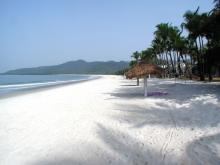By Mabinty M. Kamara
An analysis by the Sierra Leone Meteorological Agency has revealed that the rainfall recorded in the month of August 2022 surpassed the average rainfall recorded in other months of August for the last five years in the country.
“It is observed that August recorded the highest amount of rainfall followed by July, September, June, and May for the past five years. The month of August 2022 is observed to have recorded the highest rainfall for the past five years followed by 2020, 2019, 2021 and 2018,” it reads in part.
However, the said highest rainfall recorded in August 2022 is still considered a deficit rainfall when compared to the past 15-30 years of historical rainfall for Freetown.
The above is an indication that even though most of the disasters could be attributed to climate change issues but are exacerbated by human activities such as deforestation, overgrazing, mining activities, building houses on waterways, and poor settlement planning among others. It used to rain heavier than is currently recorded yet the disasters recorded now cannot be compared to that which obtained some 15-30 years ago.
The month of July according to the agency’s analysis is seen as the second highest rainfall recorded for the past five years.
It noted that the year 2020 recorded the highest rainfall followed by 2019, 2018, 2022, and 2021.
An analysis of incidences captured by the National Disaster Management Agency (NDMA) revealed that the agency has already recorded 117 disasters for 2022 out of which windstorm accounts for 30, mudslide 1, flooding 6, flashflood 8, and 8 building collapsed 64 of the said figures are fire-related incidents.
It noted that only five incidences of disasters were recorded in 2020 with a total of 132 cases in 2021.
The meteorological agency had in its seasonal forecast for this year’s rainy season in Sierra Leone warned of a heavy windstorm in the capital, Freetown, and other mountainous areas such as Kabala and Makeni among others.
The forecast which covers June to September of 2022 indicates that there would also be flash floods in Freetown and other areas prone to flooding due to the short dry spell that they may experience towards the end of the season despite the rain deficit that will be recorded. The average rainfall according to SL-Met officials is from 3000mm to 2,500mm.
Predicting strong wind prevalence, early thunder and lightning with high occurrences in October, risk of floods and pest/ insect outbreak, due to persistent human activities, the agency therefore recommends that people “avoid the uncontrolled occupation of flood-areas with habitations and crops, clean sewer channels to facilitate the evacuation of rainwater. Clean up agglomerations and avoid contact with contaminated water, through drainage and gutter cleaning operations’’.
The latest rain on the night of Saturday 10th September left six people dead among them three children in two separate incidents in Freetown.
The Director of Relief and Response at the National Disaster Management Agency, Sinneh Mansaray said a wall collapsed on a house at the back of Spur Loop killing four people and another wall also fell at the back of Country Lodge Hotel at Hill Station in Freetown killing two people.
In the Southern region along Bonthe Island, the rise in sea level is reported to have washed away farmlands leaving farmers in agony and frustration. Farming in Sierra Leone is mostly subsistent, with most farming families relying on what they cultivate to feed and sell the rest to care of their other needs.
Speaking on what is to be expected, the Deputy Director General of NDMA, John Vandy Rogers said according to SLMET, specified areas along the Atlantic sea such as Bonthe, Moyamba, and Pujehun will continue to experience late rain.
Copyright © 2022 Politico Online









